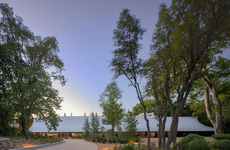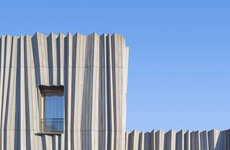
The Asakusa Culture Tourist Information Centre is a Modern Take on Tradition
Jana Pijak — June 29, 2012 — Art & Design
References: kkaa.co.jp & frameweb
The Asakusa Culture Tourist Information Center by Kengo Kuma and Associates features a facade constructed from a series of layered wooden slats. The minimalist structure is a modern take on a traditional Japanese design aesthetic.
Located in the heart of Tokyo's Asakusa district, this contemporary urban building gives balance to the busy street corner. The public space is home to a tourist information center, a number of conference areas, a multi-purpose hall as well as an exhibition space.
With a design that pays homage to cultural architectural practices, the Asakusa Culture Tourist Information Center by Kengo Kuma and Associates features a series of stacked wooden huts that provide their interior with protection from the sun's rays.
Located in the heart of Tokyo's Asakusa district, this contemporary urban building gives balance to the busy street corner. The public space is home to a tourist information center, a number of conference areas, a multi-purpose hall as well as an exhibition space.
With a design that pays homage to cultural architectural practices, the Asakusa Culture Tourist Information Center by Kengo Kuma and Associates features a series of stacked wooden huts that provide their interior with protection from the sun's rays.
Trend Themes
1. Layered Wooden Slat Facades - Designing buildings with layered wooden slat facades offers a modern twist on traditional architectural practices.
2. Cultural Architectural Practices - Incorporating cultural architectural practices in contemporary designs creates a unique and immersive experience for visitors.
3. Minimalist Urban Buildings - Creating minimalist urban buildings helps to bring balance to bustling city streets while still serving functional purposes.
Industry Implications
1. Architecture - The architecture industry can explore the use of layered wooden slat facades to create innovative and visually appealing structures.
2. Tourism - The tourism industry can benefit from incorporating cultural architectural practices in tourist information centers to provide a unique experience for visitors.
3. Event Management - The event management industry can utilize minimalist urban buildings to create versatile and aesthetically pleasing spaces for conferences and exhibitions.
3.8
Score
Popularity
Activity
Freshness























